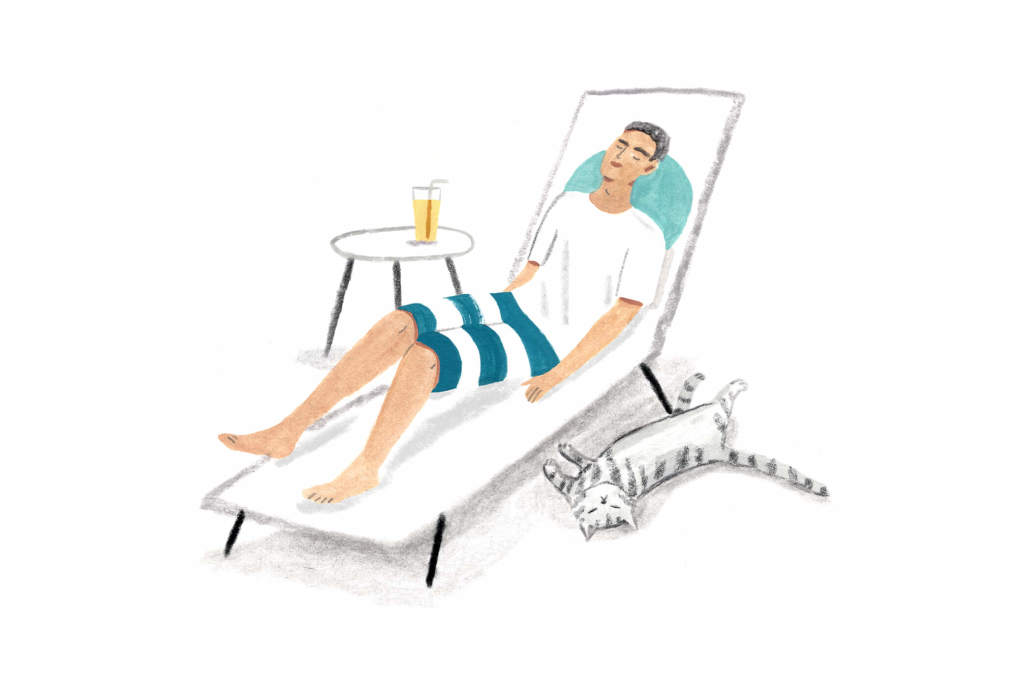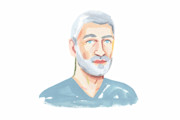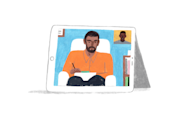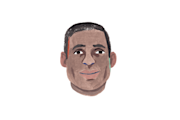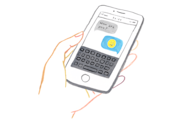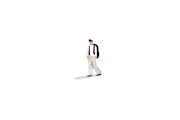This time last year, I was in a lonely, uncomfortable place—and I don’t just mean LA. My long-term girlfriend and I had recently split up after moving away from home together, and I was in the process of moving into a new apartment, alone, with my dog.
I had a few casual friends in my new city, but I didn’t have the kinds of friends you’d feel comfortable asking for help with moving—a lonely thought on its own. Of course, it was easy enough to Yelp around to find movers to help get my things from place to place, but they would not stick around to have a beer with the dog and me afterward. I was lonely.
I needed to get better at being alone, and I knew it. I’d unpacked my boxes in my new solo home. It was now time to unpack this feeling.
Does loneliness affect men and women differently?
According to a study published by the Movember Foundation in 2014, social connectedness, as measured on the Duke Social Support Index (DSSI), drops off for many men in their mid-30s and remains below average in study respondents from 35–59.
The study measured this disconnectedness in several ways, including whether respondents had anyone in their local area they felt “they [could] depend on or feel very close to.” Twenty-five percent of respondents answered that no one in their local area fit that bill.
Ironically, men are less likely to seek professional help for these feelings of isolation. According to one poll, only 11.2% of male respondents went to therapy in 2019. In general, men have been conditioned to think they are meant to be comfortable in isolation.

What about when you can’t avoid isolation?
While I may be in the 25% of men who experience the acute aloneness of not having close friends in my city, I am also in that 10% of men who do seek help. I’d seen a therapist for years before I moved, and he had helped me learn coping strategies that were continuing to help me through my breakup.
I found an LA-based therapist in early March 2020, after a few attempts to connect with other therapists who weren’t quite the right fit. Some were too rigid in their use of formal frameworks and made me feel like I was being inserted into a box that didn’t feel right. Others were so casual and conversant I felt like they wanted to be friends rather than help me through a tough spot.
I eventually found someone calm and personable, who also helped me understand more academic modes of thinking—which, in turn, helped me understand what I was feeling more than I’d thought it would. We made it through one in-person session before the state of California began its “Safer At Home” recommendation due to COVID-19. Now everyone was isolated. My therapist and I have spoken over video chat just about every week since.
In some ways, talking about social isolation felt absurd in the Spring of 2020. People across the country were under orders to socially isolate as much as possible. But talking through my already extant social anxieties and, yes, social distance, I was able to learn some things that have helped me maintain and nurture long-distance friendships.
I’ve also learned how to be more comfortable in my skin when alone, cope with living alone through a pandemic, and even be a better resource to my community at a time when it’s really needed.
Learning about attachments styles made me feel more connected
Social anxiety was a big part of why I had sought therapy in the first place, years before I’d even moved to LA and away from my closest friends. Back then, I’d needed to learn my way through coping strategies so I wasn’t hiding out at home and avoiding the outside world. Once I had that more or less under control I figured I was done with that portion of my journey.
Wrong.
Though I’d (mostly) managed to stop hiding out at home, I realized that I was still seeing some of the same patterns in my social relationships that I’d struggled with in the past. Certain people or even certain social roles (or archetypes) felt unreliable or scary, and I didn’t know why.
I began talking with my therapist about it, and he told me about attachment styles, which I hadn’t previously explored.

Attachment theory is essentially that each person forms intimate emotional bonds differently, based in part on childhood relationships with a parent or parents or other guardians. These tendencies can influence how comfortable we feel in close relationships, whether with partners, close friends, or family. They are sorted into four categories or attachment styles:
Secure
Secure attachment styles appear in folks who are comfortable getting close to others without fear of abandonment or disappointment. Those with secure attachment styles have little trouble being depended upon or depending on others.
Anxious or preoccupied
Anxious attachment styles present as an almost constant fixation on the state of one’s relationship with others. Folks with anxious attachment styles need a lot of reassurance that one’s partner won’t abandon or devalue them. They crave intimacy but are insecure in most relationships.
Dismissive or dismissive-avoidant
Dismissive attachment styles are displayed by those who seek out isolation over intimacy. They think of themselves as independent even to the point of distrusting others, particularly those who seek out closeness.
Disorganized or fearful-avoidant
Those who have disorganized attachment styles also often isolate themselves from others but not out of a preference for being alone, but rather out of fear or worry that others will reject them or abandon them, or otherwise abuse that closeness.
Understanding a bit more about how I value different relationships and even what can lead me to feel on edge socially helped me manage all the alone time necessitated by COVID-19. It also provided a touchstone for me to return to when I’m feeling particularly low or lonely; I’ve talked through a list of people I know I can depend on, and I have that go-to list on speed dial.

This is the kind of work I really value my therapist’s help with. He asks me questions I’m not able to—or don’t want to—ask myself, but he won’t let me go too far down the rabbit hole when the answers to those questions are troubling. As he put it: it’s better to work with a mental health professional on these kinds of assessments than to do them yourself, for the same reason you’re better off speaking to a doctor about that new mole you noticed than relying on Google Image Search and WebMD.
The science of loneliness
More recent research on loneliness related to the COVID-19 pandemic has revealed something counter-intuitive: Loneliness has not increased as much as you might expect, though anxiety and depression have. Some of that is related to the technological connectedness we have available—and the fact that we’re actually using it.
I’ve made more FaceTime calls during the past seven months than I did in my entire life prior to that. This is another change to thank my therapist for.
My therapist is the one who got me to take my first trip out of my neighborhood for a change of scene after I’d moved. It was all I could talk about that night when I spoke with my family. That broke up the monotony for all of us and gave us all something hopeful to talk about.
Therapy gives me somewhere to put some of my stress and teaches me new techniques for coping with it. It encourages me to try new things, be they video calls to stay in touch with loved ones or new routes for my daily walk with my dog.
And beyond lightening my load, my individual work has made me more capable of sharing some of my community’s load, and might even make it likelier that I don’t have to be isolated when I don’t want to be.
